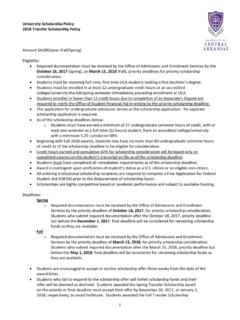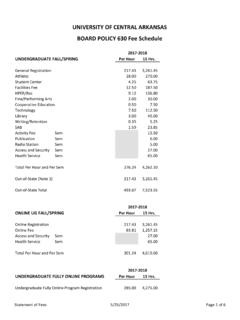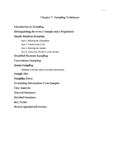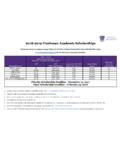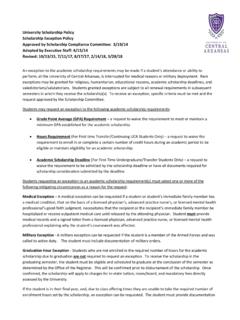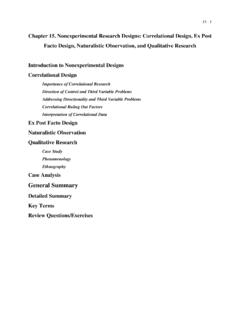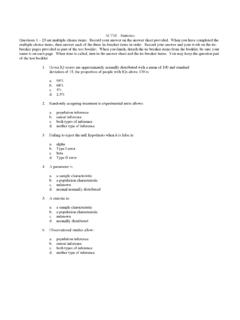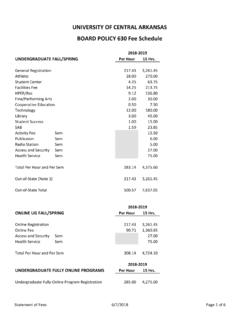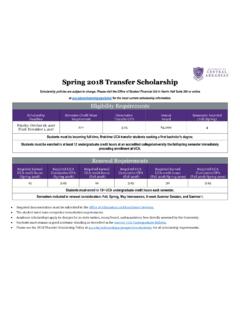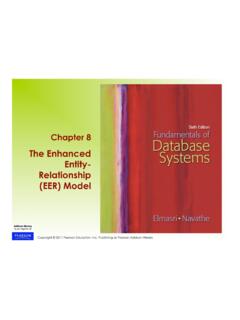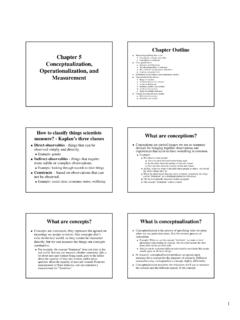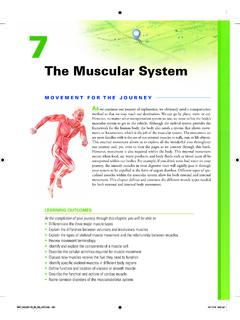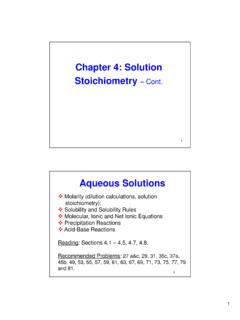Transcription of Chapter 5 Measurement Operational Definitions
1 5-1. Chapter 5. Measurement Operational Definitions Numbers and Precision Scales of Measurement Nominal Scale Ordinal Scale Interval Scale Ratio Scale Validity of Measurement Content Validity Face Validity Concurrent Validity Predictive Validity Construct Validity Thinking Critically About Everyday Information Reliability of Measurement Test Retest Reliability Alternate Form Reliability Split-Half Reliability Factors That Affect Reliability Case Analysis General Summary Detailed Summary Key Terms Review Questions/Exercises 5-2. Operational Definitions An essential component of an Operational definition is Measurement .
2 A simple and accurate definition of Measurement is the assignment of numbers to a variable in which we are interested. These numbers will provide the raw material for our statistical analysis. Measurement is so common and taken for granted that we seldom ask why we measure things or worry about the different forms that Measurement may take. It is often not sufficient to describe a runner as fast, a basketball player as tall, a wrestler as strong, or a baseball hitter as good. If coaches recruited potential team members on the basis of these imprecise words, they would have difficulty holding down a job.
3 Coaches want to know how fast the runner runs the 100-yard dash or the mile. They want to know exactly how tall the basketball player is, the strength of the wrestler, the batting average of the hitter. Measurement is a way of refining our ordinary observations so that we can assign numerical values to our observations. It allows us to go beyond simply describing the presence or absence of an event or thing to specifying how much, how long, or how intense it is. With Measurement , our observations become more accurate and more reliable. Precision is important in all areas of our lives, especially in the sciences and technologies, and we look for ways of increasing it.
4 Here is an interesting classroom demonstration of the precision of numbers versus the precision of words Ask the class members to write down on a piece of paper what number the word several represents to them. Gather the responses and then plot them on the board. You will be surprised at the wide range of numbers represented by the word (it usually ranges from 2 to 7). How often have you been in an argument with a friend, only to find out after much debate that you are using key words in different ways? The argument is one of semantics rather than of issues.
5 You defined the word one way, and your friend defined it a different way. This experience is more common among laypersons than among scientists, but it still occurs. Before the merits of an issue or a position can be discussed, there must be agreement about the meaning of the important terms. The same is true in science. If we are to avoid confusion and misinterpretation, we must be able to communicate unambiguously the meaning of such terms as intelligence, anxiety, altruism, hostility, love, alienation, aggression, guilt, reinforcement, frustration, memory, and information.
6 These terms have all been used scientifically, in very precise ways. Each of these terms could be given a dictionary definition , usually referred to as a literary or conceptual definition . But dictionary Definitions are not sufficiently precise for many scientific terms because they are too general and often too ambiguous. When a word is to be used scientifically or technically, its precise meaning must be conveyed it must be clear and unambiguous. We achieve this clarity of meaning by operationally defining the term. To state the operations for a term means to make the term observable by pointing to how it is measured.
7 An Operational definition , then, makes the concept observable by stating what the scientist does to measure it. 5-3. For example, anxiety could be defined in dictionary terms as a state of being uneasy, apprehensive, or worried. An Operational definition of the term could include observable measures such as sweating palms (observable as sweat gland activity), increased heart rate (observable with heartbeat recording), dilated pupils, and other observable physiological changes. It could also be a self-rating scale or a paper- and-pencil questionnaire. We could in each case specify the precise amounts of each measure necessary for our Operational definition of anxiety.
8 As another example, consider the hypothesis that we proposed in the last Chapter . We hypothesized that the effect of TV violence on older children's aggressive behavior at school will be less if the characters are not human. Although this appears to be a clear statement, more specific Operational Definitions would be necessary before any research could be undertaken to test the hypothesis. The researcher must make several decisions. What is violence on TV? Certainly, one character killing another character would be considered violence. What about a shove or push?
9 What about a verbal assault? What about when Wile E. Coyote falls off the cliff and is hit in the head with a rock? What constitutes a character that is not human? We could probably agree that Wiley Coyote fits this category. What about a computer-animated person? How will aggressive behavior at school be defined? Of course, getting into a fight would be aggressive behavior. What about profanity directed toward another student or teacher? What about little Johnny chasing Mary on the playground? Notice that there are no correct answers to these questions.
10 However, the researcher must decide what is going to be meant by each of the variables in a particular study and be able to communicate those Operational Definitions to those who will be consumers of the research findings. Table contains both dictionary Definitions and Operational Definitions of some common terms. Note that in each case, the Operational definition refers to events that are observable or events that can easily be made observable. Note further that the definition is very specific rather than general. 5-4. The feature that determines whether a particular definition is more useful than another is whether it allows us to discover meaningful laws about behavior.

